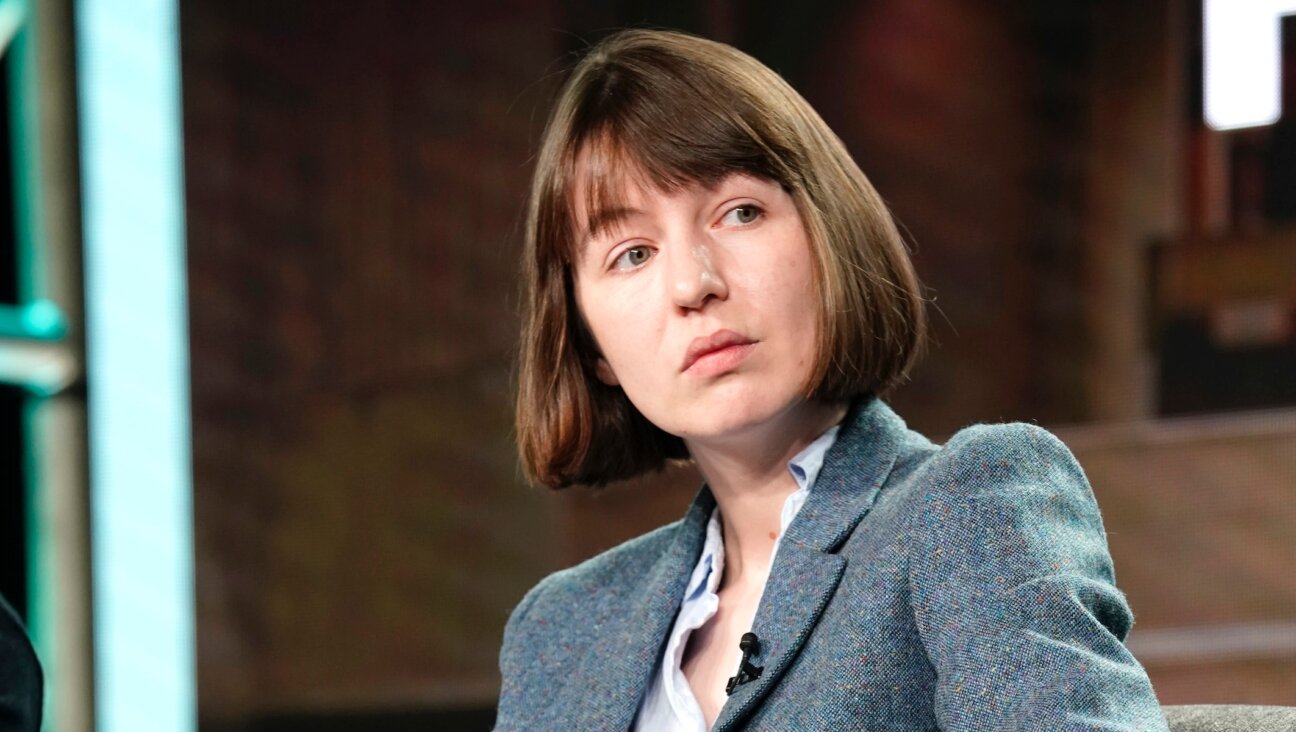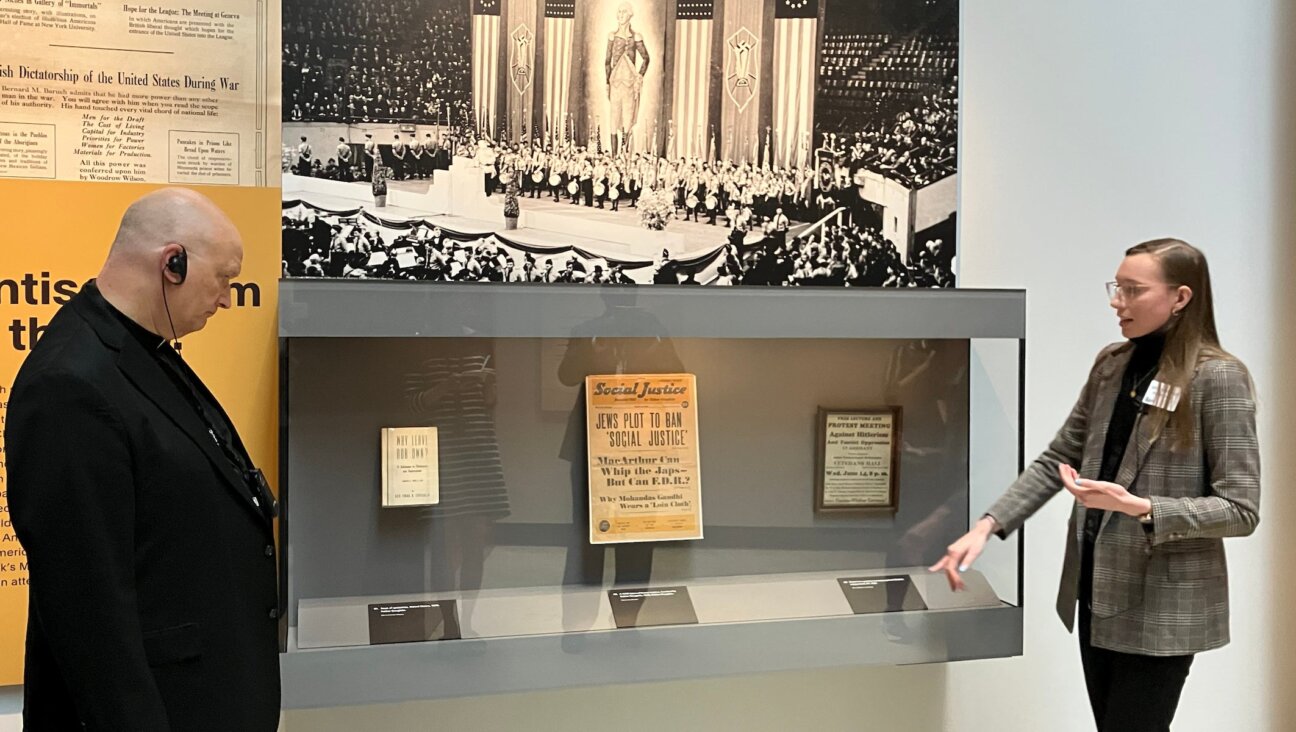The Jewish Goddess, Past and Present
‘The Da Vinci Code,” soon to be a major motion picture, is an old tale in new clothing: It is the story of the goddess, sometimes referred to as the “Divine Feminine,” the female aspect of — or counterpart to — the familiar male God of the Hebrew and Christian Bibles.
In Dan Brown’s phenomenal best seller, She appears as Mary Magdalene, Bride of Jesus, whose identity was deliberately effaced by the church fathers. But concealing the existence of the Divine Feminine is much older than the Holy Grail. As scholars have shown, the Hebrew Bible itself condemns, marginalizes and ultimately buries the veneration of female diety-images that were common in ancient Israel.
Based on the Bible, one might think that most Israelites were pious monotheists; yes, they came into contact with foreign gods and goddesses, and many strayed, but the Temple was the center of religious life, and the priests there maintained the covenant between the God in heaven and His people.
Recently, however, archaeologists and biblical critics have revealed a far more complicated picture of how biblical Israelites lived their religious lives. As exhaustively summarized in William Dever’s “Did God Have a Wife? Archeology and Folk Religion in Ancient Israel,” most scholars now believe that the ancient Israelite world was far less monolithic, and monotheistic, than the Bible suggests. Household shrines, statuettes of male and female figures, and inscriptions and carvings describing “YHVH and His Asherah” all point to a decentralized biblical religion that was practiced largely within family structures, and well beyond the strictures of Jerusalem’s orthodox elite. Some scholars believe that this evidence points to an indigenous “goddess worship” that regarded the biblical God as one half of a divine couple. Others say it suggests the influence of non-Israelite religions. And still others, such as Raphael Patai, whose enormously influential 1978 book, “The Hebrew Goddess,” arguably inaugurated the popular appropriation of this scholarship, believe that the tradition of the Divine Feminine — a female half of God, or bride of God, or earth-centered, body-centered counterpart to the sky god Yah — endured long after the biblical period ended.
Dever, professor emeritus of Near Eastern archaeology and anthropology at the University of Arizona, begins his study by drawing a detailed portrait of biblical Israelite life: Based on meticulous archeological research and imaginative analysis, Dever describes biblical Israel as an “economic backwater” with sparse population, almost no literacy and mere survival as the all-consuming, and often elusive, goal. Moreover, in Dever’s view, the Bible’s long list of prohibited idolatrous practices “implies that the majority of people, not just an easily ignored minority, were doing them — and, I would argue, principally doing them in a family context, where women played a highly significant role.”
At the same time, Dever disputes the image of orgiastic “fertility cults,” which he says were imagined by puritanical (and prurient) biblical theologians. His book depicts a cult not of the sexual but of the maternal: a family-centered, women-centered veneration of Asherah, the “nursing goddess” of the Israelites. He rejects the narrative of a sexual, sensual Canaanite paganism that was replaced by a staid monotheism of the Israelites. Statues featuring large-breasted women, for example, likely connoted not sex but nursing — not the consort but the mother. As Dever notes, when ancient religion wants to depict sexuality, like that of the goddesses Anat or Astarte, it does so in graphic detail.
Finally, Dever denies that Israelite monotheism was ever the dominant religion in pre-Exilic Israel, suggesting instead that there was a kind of “religious pluralism within the national Yahweh cult” — he notes the Prophet Jeremiah’s permission for women to continue their “domestic piety” — in which veneration of feminine imagery was not “foreign” but indigenous. Many of these images were not shunned but integrated, albeit in subtle disguises. Here’s one rather shocking example from Dever’s book: Asherah’s tree was often drawn in the form of pubic hair above the female genitalia — yet, as Dever observes, it also looks suspiciously like the menorah.
Dever’s book is a treasure trove of archaeological data and analyses of both biblical text and society, though it is marred by endless sniping at other academics and by boasts about Dever’s own theories. Dever also has a rather selective reading practice: While he agrees with some biblical contentions (regarding Rachel’s “household gods” and the idolatrous “high places,” both confirmed by archaeology), he rejects others, denying, for example, the Molech was actually the name of a foreign god.
What Dever only touches on at the end, however, is how veneration of the goddess persisted long after the biblical period. His analysis of the Divine Feminine in Kabbalah — where She emerges as a central preoccupation — relies almost completely on Patai and omits the best evidence for his own case: the Zohar’s use of “Asherah” as a name for the Shechinah, the feminine aspect of God. For the Kabbalah, uniting the transcendent masculine and the immanent feminine is a core religious act, and for the many who welcome “the Sabbath Queen” every Friday night, images of the Divine Feminine are not hard to find.
Fair enough; Dever is a biblical archeologist, not a historian of religion. But where Dever leaves off, contemporary teachers (and some scholars) begin. For example, the feminine imagery of biblical “wisdom literature,” omitted by Dever, is the subject of “The Divine Feminine in Biblical Wisdom Literature,” a new book by Rami Shapiro, a popular teacher of contemporary spirituality and mysticism. Unfortunately, while Shapiro’s book does contain some fine new translations of biblical poetry, the book, meant for self-help purposes, elides the distinctions between the wisdom literature’s Divine Feminine (Wisdom; Chochma in Hebrew, Sophia in Greek) and the “Divine Mother” as expressed in Dever’s sources, as well as in Kabbalah, Christianity and contemporary Jewish spirituality. Simply to say, as Shapiro does, that Wisdom “is the manifestation of the Divine Mother as She appears in the Hebrew Bible” is not accurate, and lessens, rather than heightens, the impact of this complex literature. In the Kabbalah, intuitive Wisdom is balanced by rational, critical understanding (the latter of which, ironically, is Binah, the Divine Mother); Shapiro’s book should have been, as well.
Yet the Divine Feminine is not purely the province of the New Age. As Professor Susan Sered has observed, the pattern of women-centered “domestic piety” co-existing with men-centered “normative religion” still exists throughout the Jewish world, where women maintain folk traditions and “family wisdom” independent of the book religion of male elites. Think of the “superstitions” and “old wives’ tales” one inherits not from books but from grandmothers and aunts. And, of course, traditional symbols of the Divine Feminine endure, albeit removed from their original context. Consider the Easter egg and Christmas tree in the Christian tradition (both originally pagan symbols of the Divine Feminine) or, for that matter, the Holy Grail.
In the Jewish tradition, the most obvious symbol of the Divine Feminine may be none other than the Torah itself, as has been pointed out by Amichai Lau-Lavie, director of Storahtelling: Jewish Ritual Theater Revived. Called the “Tree of Life” (yet another euphemism for Asherah), the Torah’s symbolism, Lau-Lavie says, enacts the revelation of the Goddess. “The ark, the Holy of Holies, is separated by a curtain, like in the Temple, and behind it is the Torah, wearing a silver crown and velvet dress, always referred to in the feminine. Then we bring her out with great decorum, kiss her, undress her, open her up and commence the ritual of knowledge in the biblical sense.”
While “the Goddess” has long been in hiding in such coded symbols, today She is, as it were, coming out of the closet, appearing in everything from feminine God(dess) language to “priestess training programs” in both Israel and the United States. Folklorist Taya Shere, a co-leader of one such program, says that she is merely recapturing an ancient, lost and more balanced Jewish religion. “Judaism came from somewhere, and it is comforting for me to be aware of its roots,” she said. “Even the challah loaves come from the holy cakes baked for Astarte.”
Today’s ritual innovators may seem quite distant from the rural women described in Dever’s volume. But as Dever notes, images of the Divine Feminine persist because they speak to deep human needs. Rational, philosophical monotheism, he says, “is in some ways less sophisticated — that is, less comprehensive, less flexible, less natural” than its more mythic antecedents. One is reminded how much more nuanced is the Zohar’s dynamic, embodied human psychology than the linear rationalism of Maimonides, which posits one human faculty as supreme above all others.
Perhaps the deeper question here is what we mean when we speak of Judaism — whether we refer to the normative texts of the elite, or the descriptive reality of the masses. Which is more accurate, and which more wise: the strict ideals of the rabbis, or the complex realities of the peasants? For that matter, who is the “Sabbath Queen,” anyway? And why, despite millennia of suppression, does She continue to endure?
Did God Have a Wife? Archeology And Folk Religion in Ancient Israel
By William G. Dever
Wm. B. Eerdmans Publishing Company, 360 pages, $25.
The Divine Feminine in Biblical Wisdom Literature
By Rami Shapiro
Skylight Paths Publishing, 240 pages, $16.99.
* * *|















